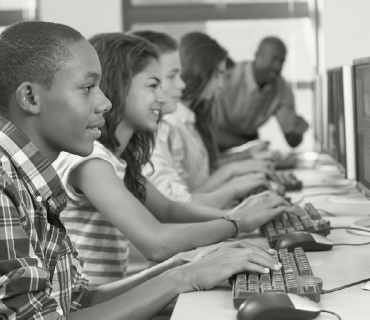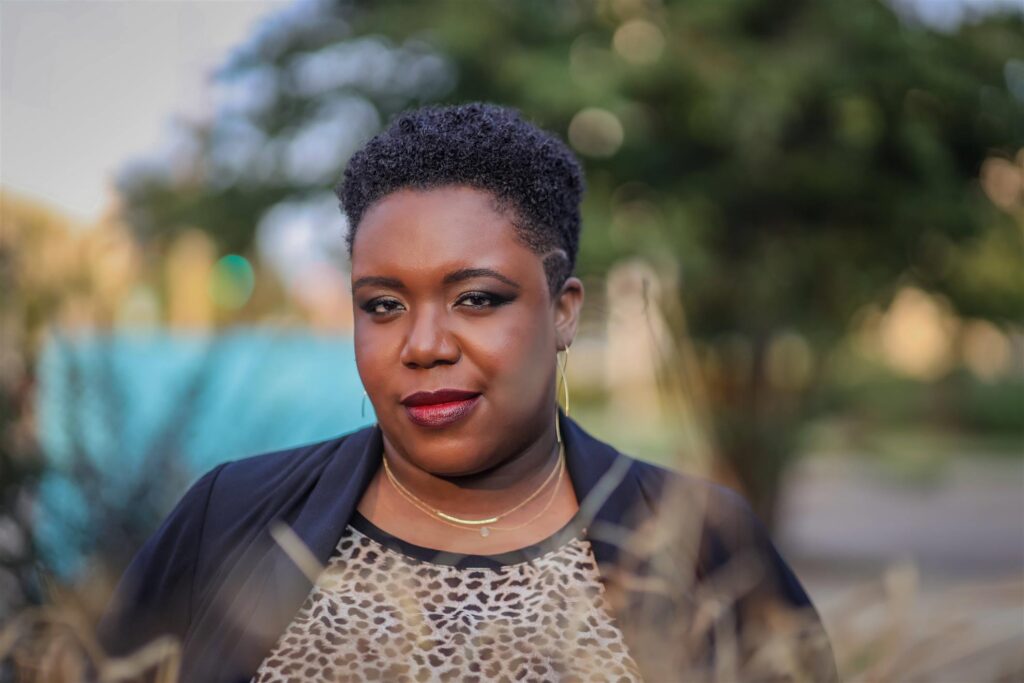
The contributions of Black Americans to global STEM and Computer Science achievement cannot be overstated and should be used as a segue to help Black CS students envision themselves as having a rightfully earned place in the world of computer science.
Full Story
It’s February 2023! Que the Beyonce version of “Before I Let Go,” and let’s get the Black History Month party started! If it is not glaringly clear, Black History Month (BHM) is one of my favorite times of the year, and I have yet to run out of ideas on how to celebrate it in fresh and engaging ways. The contributions of Black Americans to global STEM and Computer Science achievement cannot be overstated and should be used as a segue to help Black CS students envision themselves as having a rightfully earned place in the world of computer science.
Inequitable representation and identity reflected in CS social views and coursework are some of the noted reasons for the disparity among interest, enrollment, and success among BIPOC students. Ensuring equity in CS classrooms begins with pedagogical practices but extends beyond content-specific activities. Fostering a learning environment where relationships are prioritized, and identities are celebrated ensures students not only feel seen but are motivated to push themselves toward success. With BIPOC students still severely underrepresented in CS courses and career fields, showing successful CS leaders of diverse backgrounds can boost student interest. BHM is the perfect opportunity to highlight the contributions of Black Americans to computer science and STEM at the global level.
With most CS teachers identifying as white (68%) and having limited experience teaching Black students, there can be some discomfort around identifying an appropriate way to celebrate BHM. This could be why some ignore it altogether or focus on the same three (Dr. Martin Luther King, Jr., Rosa Parks, and Frederick Douglass). However, the choice to ignore or recycle the “greatest hits” ultimately hinders our students from finding their identities in CS. But don’t fret; I have accumulated some tips to dispel the discomfort and a few scalable activities to get you and your students started celebrating BHM in a non-cringy way.
Tips for Creating an Equitable and Enjoyable Black History Learning Experience
-
Be honest and vulnerable: Not as knowledgeable as you would like to be about the contributions of Black Americans to CS and STEM? That’s ok. Honestly, no one knows everything, so start where you are and be open and honest with your students that you are learning alongside them. Use your lack of expertise as an opportunity to allow students to take the lead in teaching and share their knowledge with you. Not only will students strengthen their presentation skills, but they will be able to take an active role in guiding how the topic and learning are approached. This leads us to…
-
Ask the students for input: Students are always told what to know and how to show mastery so much they can struggle with leading their own learning. With many possibilities in how learning can be guided when discussing BHM and Black American contributions, this can be an opportunity to increase student voice and choice. Poll students to determine what they would be most interested in learning about. Some options could include under-celebrated inventors, social justice warriors, or medical pioneers. Once the general topic is chosen, the students can discuss ways they can highlight the pioneers within the group. Bonus points if students are allowed to choose how they approach creating an artifact that celebrates their chosen person or event.
-
Ask families and community members for support: Just as BHM education is an opportunity for students to lead, the same can be said for their family members and people within the community. Tap into your school’s network to request support in ideas, resources, and an audience for BHM celebrations.
Example BHM Exploration Activities
-
Animate a card depicting a Black CS or STEM Leader
-
Utilize and remix the BootUp PD Scratch Animated Card activity and resources to help students research and create an animated depiction of a CS/STEM leader. This activity can be scaled up (or down) depending on the animation requirements. Not sure where to begin? Here are some CS/STEM leaders to inspire creativity.
-
Grades: 3-12
-
To scale up: Add additional requirements for the animation project. Ideas include requiring an increased number and type of animations, journaling an explanation of the algorithms used, or utilizing higher-level mathematics calculations to determine sprite movement.
-
Language: Block Coding
-
-
-
Hair, History, and Secret Slave Codes
-
Choose between engaging students in a math-based design or block coding to create the intricate patterns seen in cornrow braid styles that originated in African countries. Cornrow-styled braids were used as maps to indicate safe places, hiding places for food like rice and seeds, and provided a way to retain hair that was considered unruly and unkempt. The Culturally Situated Design Tools (CSDT) team provides several activities allowing students to explore CS and African/Black history.
-
Grades: 8+
-
To scale down: Take the history of braids and challenge the students to create a pattern using the same shapes and transform them using the same concepts shared in the math-based design challenge.
-
Language: Block Coding, Unplugged
-
-
-
The Dangers of Bigotry in AI
-
Encourage students to speak out against biases in Machine Learning and AI and work toward developing solutions using Google’s Teachable Machine. Begin with sharing articles about mistaken identities by facial recognition software leading to the arrest of innocent Black men. Direct student focus to investigate why this continues to happen and brainstorm possible solutions. Introduce Teachable Machine and allow students to work through one of the tutorials before having them design their own approach to creating a more equitable and accurate machine learning model. After the students create and test their models, have them determine how what they have learned can be used to help current computer scientists.
-
Grades 6+
-
To scale down: Guides students to gain a better understanding of how AI works by challenging a sheet of paper to a game of tic-tac-toe or use these lesson plan resources to engage students to uncover how computers mimic human behavior with the Turing Test.
-
-
-
Join the Heroes of Wakanda in Microsoft’s MakeCode to develop a game to defeat Namor
-
Suri, Okoye, and Riri are back in action in a battle against Namor in a Wakanda Forever MakeCode game! Students can help them protect Wakanda by working through this game development tutorial for novice student coders.
-
Grades: 3+
-
To scale up: Challenge students to use the foundational knowledge they gained in following the tutorial to create a game using characters of their own design. Students can create a game focused on a historical figure or an afro-futuristic utopia of their imagination.
-
Language: Blocks, JavaScript, Python
-
-
-
Learn about the engineer that revolutionized video game technology
-
Kids spend hours on gaming consoles but do they know the person that revolutionized the gaming industry by developing interchangeable game cartridges was a Black engineer named Gerald “Jerry” Lawson? Google celebrated his achievements with an interactive Google Doodle where students can learn about Jerry Lawson before creating their own game.
-
Grades 3+
-
To scale down: This activity can be completed in a small or whole group setting where students work together to determine the next component of the game design. Providing students with graph paper prior to designing on the computer will also allow them to map out clear ideas about their game.
-
-
-
Check out Raspberry Pi’s February Coding Projects
-
The Raspberry Pi Foundation has created six coding projects for the beginner, intermediate, and advanced coder focused on celebrating achievements in Black History. Students can create a magazine or games to quiz their friends and family on Black History knowledge.
-
Grades 6+
-
Languages: HTML/CSS, Ruby, Raspberry Pi, Python
-
-
-
Collaborate with Pharrell Williams, Ciara, Alicia Keys, Khaid, and others to code a remix that can earn students money!
-
Amazon Future Engineer’s Your Voice is Power curriculum and competition make a space for musically inclined students to show off their skills by coding a remix to music from some of the most popular Black musicians. Teachers can start by reviewing the curriculum and guiding students through creation or letting them explore on their own. Submissions are open each October 23 – December 23, with winners announced and prizes awarded in February.
-
Grades 6+
-
Languages: JavaScript, Python
-
-
-
Celebrate BHM with Minecraft Edu
-
Minecraft Education is a great platform to help students combine their love for gaming and coding. Felisa Ford, Dr. Natasha Rachell, and Ken Shelton with support from Teaching Tolerance have created 4 lessons and demos that will take students on a journey to explore identity and how to speak up and out when they see injustices. The lessons and worlds are available to teachers and students with access to Minecraft education.
-
Grades 3+
-
Languages: Block coding, Python
-
-
There are so many ways to celebrate CS during BHM this list is only scratching the surface of what is out there! Challenge yourself and your students to learn about the invaluable impact Black CS and STEM leaders have had on we navigate the world with technology. Want to share what your students completed during BHM? Reach out to the CSTA Equity Fellows at equityfellows@csteachers.org. We are educators and instructional allies committed to bringing equitable access to and achievement in PreK-12 computer science.
About the Author
 Krystal Chatman is an Instructional Technology Facilitator in the Jackson Public School District in Jackson, Mississippi. She has been an educator in the biomedical research industry and classroom for 14 years, teaching and training students from high school to undergraduate, graduate, and physician students. She is a graduate of Millsaps College, earning a Bachelor of Science in Biology, and obtained a Master of Science in Biological Sciences from Mississippi College. In her current role, she provides support to all PK-12 teachers to help them maximize technology integration into their daily instructional practices, impacting learning for over 18,000 students.
Krystal Chatman is an Instructional Technology Facilitator in the Jackson Public School District in Jackson, Mississippi. She has been an educator in the biomedical research industry and classroom for 14 years, teaching and training students from high school to undergraduate, graduate, and physician students. She is a graduate of Millsaps College, earning a Bachelor of Science in Biology, and obtained a Master of Science in Biological Sciences from Mississippi College. In her current role, she provides support to all PK-12 teachers to help them maximize technology integration into their daily instructional practices, impacting learning for over 18,000 students.
